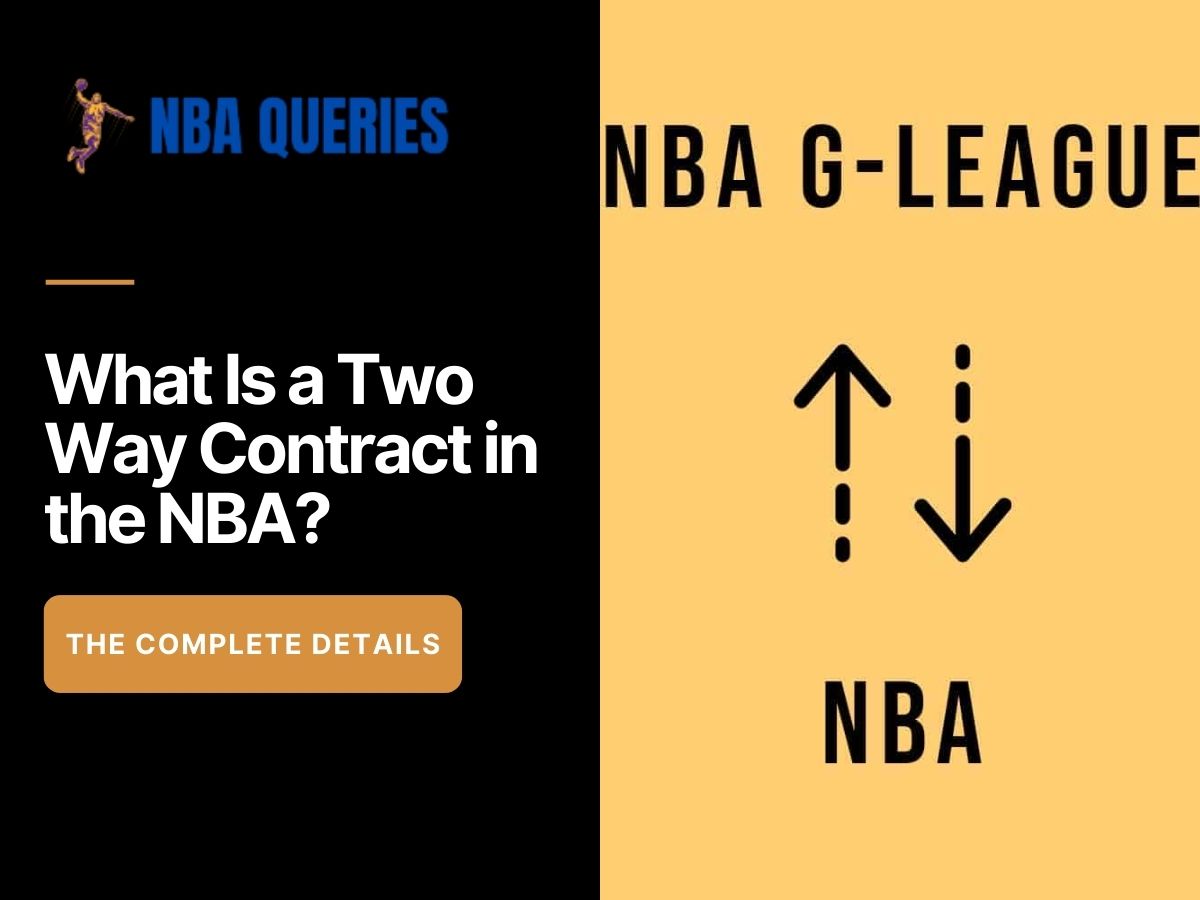In the fast-paced world of professional basketball, where talent and potential collide, the concept of a Two-Way contract has become increasingly significant. Whether you’re a die-hard NBA fan or just a casual observer, understanding what these contracts entail can shed light on the development of young players and the intricacies of team management.
Contents
Part 1: The Basics
1. Definition and Purpose
A Two-Way contract is a unique arrangement that bridges the gap between the NBA and its developmental league, the G League. Let’s break it down:
- Definition: NBA teams can sign up to two players under Two-Way contracts. These players split their time between the NBA and the G League.
- Purpose: Two-Way contracts serve as a developmental pathway for undrafted players, allowing them to gain experience and exposure while staying “on retainer” with an NBA team.
2. Who Qualifies?
- Undrafted Rookies: Players who go undrafted during the NBA Draft often find themselves signing Two-Way contracts. These deals provide them with a chance to prove their worth and potentially earn a full-time roster spot.
- Young Prospects: Even players drafted in the first or second round may sign Two-Way contracts. It’s a way for teams to invest in their development without committing to a full NBA contract.
3. Contract Details
- Time Split: Two-Way players spend most of their season in the G League (up to 45 days) and the rest with their NBA team.
- Salary: Two-Way contracts are worth approximately half of a rookie minimum contract, which translates to roughly $502,000 for the 2022-2023 season.
- Eligibility: Only players in their first four NBA seasons can sign Two-Way contracts.
- Playoffs: By default, Two-Way players are not eligible for the NBA Playoffs. However, there were exceptions during the COVID-19 pandemic, allowing them to participate in postseason games.
4. The G League Connection
- Two-Way players benefit from the synergy between the NBA and the G League. They get valuable playing time in both leagues, honing their skills and adapting to different game styles.
- The G League acts as a proving ground, where players can showcase their abilities, work on weaknesses, and catch the attention of NBA scouts.
5. Team Flexibility
- Teams can freely move Two-Way players between the NBA and the G League without going through waivers.
- If a player impresses during their Two-Way stint, the team can convert their contract to a full-time NBA deal.
6. Player Development and Exposure
- Skill Refinement: Two-Way contracts allow players to work on specific aspects of their game. Whether it’s improving shooting accuracy, defensive skills, or court vision, the extended playing time in the G League provides a platform for growth.
- Confidence Boost: Regular minutes on the court build confidence. Two-Way players get to lead their G League teams, make decisions, and experience the pressure of crucial moments.
- Scouting Eyes: NBA scouts closely monitor the G League. A standout performance can catapult a Two-Way player into the spotlight, potentially earning them a full NBA contract.
7. Team Strategies and Roster Management
- Depth and Flexibility: NBA teams use Two-Way contracts strategically. They bolster their roster depth by having players who can seamlessly step in during injuries or rest periods.
- Matchup-Specific Usage: Coaches strategically assign Two-Way players based on matchups. Need a sharpshooter against a three-point-heavy team? Call up the Two-Way shooter.
- Salary Cap Relief: Two-Way contracts provide financial flexibility. Teams can allocate resources to star players while keeping promising talents on affordable deals.
8. Success Stories
- Chris Boucher (Toronto Raptors): Boucher started as a Two-Way player, but his relentless work ethic and impressive performances earned him a full NBA contract. He’s now a key rotation player for the Raptors.
- Duncan Robinson (Miami Heat): Robinson went from undrafted rookie on a Two-Way contract to a vital piece of the Heat’s three-point shooting arsenal. His journey exemplifies the potential of Two-Way deals.
9. Challenges and Limitations
- Travel and Fatigue: Frequent transitions between the NBA and the G League can be physically and mentally draining for Two-Way players.
- Playoff Exclusions: Historically, Two-Way players were ineligible for the NBA Playoffs. However, recent changes allow teams to convert them to standard contracts for postseason play.
10. The Future
- Evolution: As the NBA landscape evolves, so will the role of Two-Way contracts. Teams may explore new ways to maximize their benefits.
- Global Expansion: With the G League expanding globally, Two-Way contracts could become even more valuable for international talent.

